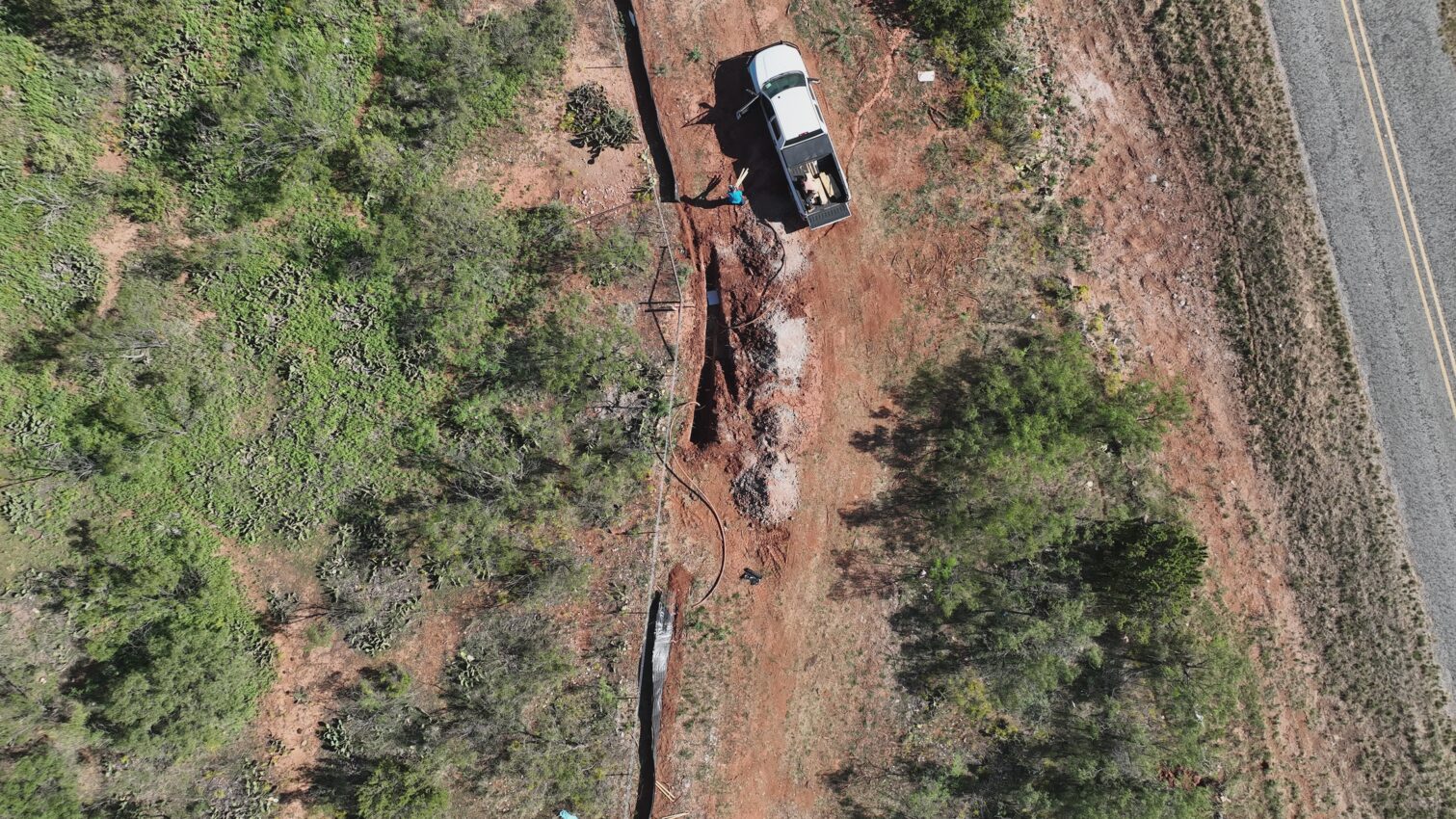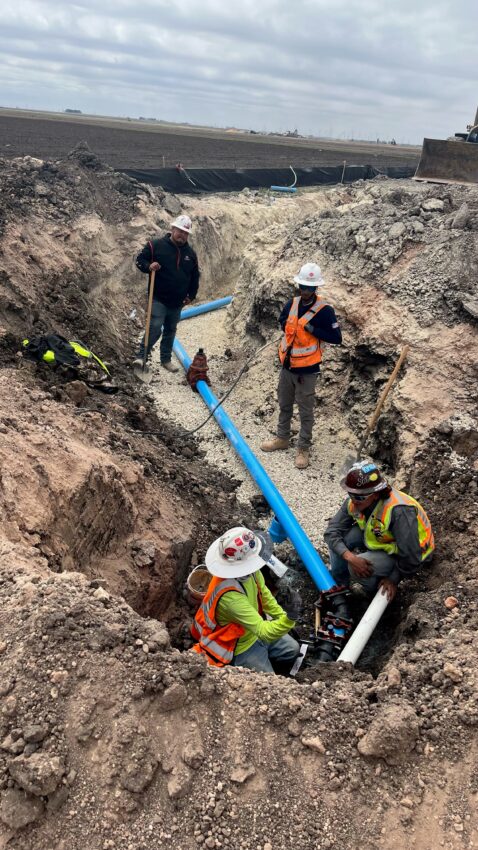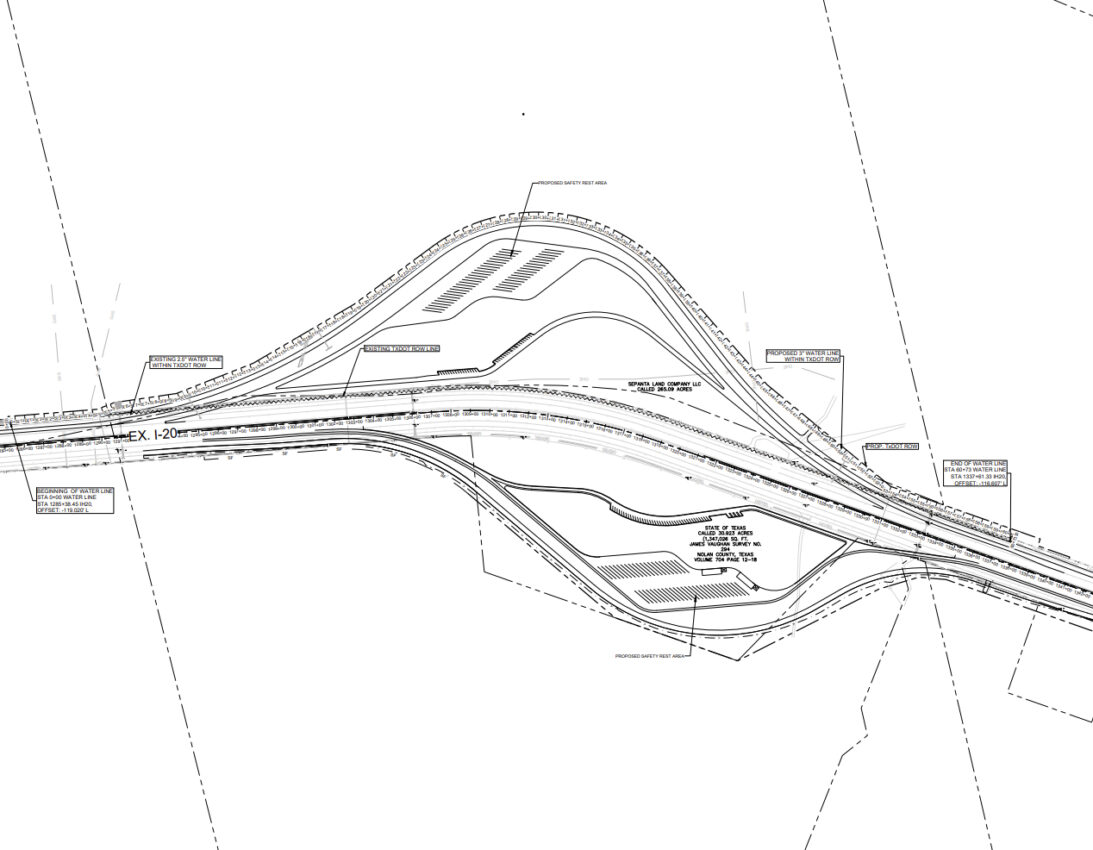Public Water System Design and Implementation in Texas

1. Introduction
Designing a new public water system in Texas requires a careful balance of hydraulic design, regulatory compliance, and construction best practices. From drilling wells to laying distribution pipelines, 30 TAC Chapter 290 (Texas Administrative Code) sets the minimum standards enforced by the Texas Commission on Environmental Quality (TCEQ). Civil engineers must integrate these regulations with proven engineering principles (often guided by AWWA standards) to ensure the water system is safe, reliable, and capable of meeting growing demand.
2. Well Drilling and Design
2.1 Site Selection and Permitting
Under TCEQ §290.41, wells must be located away from potential contamination sources (e.g., septic systems, feedlots). Engineers typically secure a 150-foot sanitary control radius around each well to protect groundwater quality. Any deviations (e.g., sanitary easements) must be approved by TCEQ before drilling begins.
2.2 Drilling Methods and Construction
Licensed drilling contractors use either rotary or cable tool methods to reach target aquifers. The wellbore is then fitted with steel or PVC casing meeting ANSI/NSF 61 standards for potable water. In accordance with TCEQ §290.41(c), the annular space is pressure-grouted from the top of the water-bearing zone to the surface using neat cement or bentonite. This prevents seepage of surface contaminants and protects deeper aquifer layers. During cementing, engineers often require a cement bond log to confirm a proper seal.
2.3 Capacity and Pump Selection
For small to medium community systems, TCEQ often requires 0.6 gallons per minute (gpm) of well capacity per connection and adequate redundancy to cover maintenance downtime. Typical submersible or turbine pumps are sized based on anticipated flow demand (gpm) and well yield (determined by aquifer tests). Including a backup well or a secondary pumping unit is recommended if the number of connections or average daily demand is high.
3. Testing and Water Quality
3.1 Well Development
After drilling, the well is “developed” using surging, pumping, or air-lift methods to remove fine materials and maximize yield. The process is verified by measuring turbidity and flow rates until water runs clear.
3.2 Bacteriological and Chemical Tests
TCEQ mandates three consecutive days of bacteriological (coliform) testing before a new source is put online (§290.41). A TCEQ-approved lab performs these tests. Water must also be tested for chemical contaminants, such as nitrates, iron, arsenic, and other regulated substances. Engineers review the results to ensure compliance with EPA Maximum Contaminant Levels (MCLs) under the Safe Drinking Water Act. If tests indicate issues—like high iron or sulfur—engineers adjust treatment design accordingly (e.g., filtration or aeration).

4. Water Treatment
4.1 Disinfection Requirements
Under TCEQ §290.42, all public water systems require disinfection. Chlorination is the most common method in Texas. Engineers design the system to achieve adequate contact time (CT) for disinfection and maintain a free chlorine residual of at least 0.2 mg/L throughout distribution. For compliance with the Groundwater Rule, some systems may target 4-log virus inactivation, require a combination of dose and contact time.
4.2 Additional Treatment Processes
If raw water exceeds recommended levels for iron, manganese, or hydrogen sulfide, design solutions can include oxidation-filtration systems, aeration followed by filtration, or sequestration. In regions with high hardness, ion exchange (water softening) or membrane processes (e.g., nanofiltration) may be considered. All chemicals used (e.g., sodium hypochlorite) must be ANSI/NSF Standard 60 certified, and major components should comply with AWWA specifications.
5. Distribution Network
5.1 Pipeline Materials and Sizing
TCEQ’s §290.44 and §290.45 outline distribution system design criteria, including material requirements and capacity. Common choices are PVC (AWWA C900), ductile iron (AWWA C151), or HDPE for water mains. Pipe diameters must support both peak hourly flows and fire flow demands. In many communities, 6-inch is the minimum main size serving hydrants to maintain adequate flow, although dead-ends and small subdivisions sometimes allow smaller diameters if approved by TCEQ.
5.2 Pressure and Fire Flow
Engineers typically design systems to maintain ≥ 35 psi at all service connections under normal operating conditions and ≥ 20 psi during fire flows (per TCEQ§290.44). A hydraulic model (e.g., EPANET or WaterCAD) often helps confirm that pipe sizing, pumps, and storage volumes meet these criteria. Fire flow requirements are commonly 1,500 gpm at 20 psi for residential areas, though local fire codes vary. Some municipalities require even higher flows for commercial or industrial zones.
5.3 Storage and Pumping
Depending on local topography and number of connections, engineers may design elevated storage tanks or ground storage with booster pumps. TCEQ typically requires 200 gallons of total storage per connection for community systems. Booster pumps should have additional redundancies so that, with one pump out of service, the remaining capacity meets peak hour demand. Hydropneumatic tanks (pressurized tanks) can regulate system pressure in smaller systems or serve as an additional buffer.
5.4 Separation from Contamination Sources
All distribution lines must maintain horizontal and vertical separation from sewer lines to prevent cross-connection contamination. §290.44(e) generally requires a 9-foot horizontal distance between water and sewer lines, with special sleeving if closer. Engineers specify trench depths and bedding methods that protect pipes and accommodate freeze depths in northern parts of Texas.
5.5 Pipeline Testing and Disinfection
Prior to service, new water mains must be pressure-tested and leakage-tested per AWWA C600/C605. Engineers also require disinfection of mains using AWWA C651 guidelines, ensuring a sufficiently high chlorine concentration is held for a specified duration, followed by flushing and bacteriological testing before the lines are connected to the active system.
6. Regulatory Compliance
6.1 Plan Review and Approval
All new public water system components require engineering plans and specifications sealed by a Texas-licensed PE and submitted to TCEQ for Plan Review. After construction, the system must undergo final inspection to confirm it meets the approved design. Deviations require additional TCEQ review or justification.
6.2 Ongoing Monitoring and Reporting
Once operational, the system is subject to monthly bacteriological sampling, annual chemical monitoring, and any additional requirements under 30 TAC Chapter 290, Subchapter F. Operators must maintain a licensed water operator (at least Class D for smaller systems) to oversee daily operations, record disinfectant residuals, and respond to any emergencies or regulatory actions.
6.3 Capacity and Operational Requirements
Under TCEQ §290.45, engineers must ensure sufficient source, pumping, and storage capacity for the system’s number of connections. TCEQ also requires compliance with §290.46 for routine operational practices, record-keeping, and sanitary surveys (periodic inspections typically every 3–5 years). Any expansions or significant modifications to the system (e.g., adding more connections than originally approved) must be reported to TCEQ.
7. Construction Oversight
7.1 Quality Assurance
Civil engineers or their representatives typically oversee critical activities like well cementation, pipe bedding, and tank erection. Inspection protocols include checking welds, verifying gasket integrity, ensuring correct pipe diameters, and confirming that valves/hydrants meet AWWA specs. Daily field reports document progress, weather impacts, and any design revisions.
7.2 Safety and Environmental Compliance
Construction sites must follow OSHA safety standards, especially for trenching and confined spaces. Stormwater runoff controls (e.g., silt fencing) may be necessary under local or state regulations. After well drilling, waste materials like drilling mud should be disposed of properly to avoid contaminating nearby land or waterways.
7.3 Testing and Startup
Before placing any well, tank, or pipeline into service, engineers conduct hydrostatic tests, chlorination, and final bacteriological sampling. The system is then “started up” under close observation to verify pressure stability, pump cycling, and chemical dosing rates. A final set of as-built drawings and a construction certification letter is submitted to TCEQ to document compliance.
8. Conclusion
Developing a public water system in Texas involves more than just drilling wells and laying pipes. Civil engineer designers must integrate TCEQ regulations (30 TAC Chapter 290), AWWA standards, and best construction practices to ensure safe, reliable, and high-quality water for communities. By applying clear design criteria—from well construction to treatment and distribution—engineers can deliver a system that meets today’s needs while allowing for future expansion. Thorough construction oversight and ongoing monitoring preserve water integrity and regulatory compliance. In short, thoughtful design and execution provide every Texan with water they can count on, from the initial source to the consumer’s tap.
Key References and Resources
- TCEQ 30 TAC Chapter 290: Rules and Regulations for Public Water Systems, https://texas-sos.appianportalsgov.com/rules-and-meetings?chapter=290&interface=VIEW_TAC&part=1&title=30
- AWWA Standards (C600, C605, C651, etc.) for pipe installation, disinfection, and more https://www.awwa.org/standards/
- ANSI/NSF 60/61: Certification for treatment chemicals and system components https://www.nsf.org/water-systems/treatment-chemicals-media/drinking-water-treatment-chemicals
- Safe Drinking Water Act (SDWA): Federal requirements enforced by TCEQ at the state level https://www.epa.gov/sdwa

